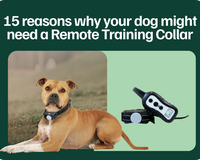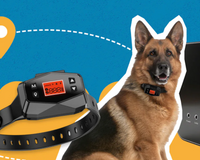Travelling with your Dog
Travelling around the UK with your dog is an unforgettable experience. Not only is it more fun to bring your furry friend along, but you get to make some incredible memories together.
Going on a road trip with a dog takes a bit more planning than a regular trip. Below are factors you need to consider and answers to common questions about road tripping with a dog.
Tip 1: Make Sure Everything is Up to Date
Take the time to ensure your dog is wearing an up-to-date dog tag, is appropriately microchipped, and isn’t missing any vaccinations.
If you’ve moved house since having your dog, it’s easy to forget to update your information. Talk to your local council about updating your microchip information, and contact your vet about vaccinations.
If you don’t have a copy already, ask your vet for a copy of your dog’s vaccination records. We recommend saving this on your phone and keeping a copy in your glove box just in case.
And on that note, it’s best to brush up on what biosecurity rules there are for inter-regional travellers. Check with the relevant authorities if planning to travel to different regions.
Tip 2: Pack the Essentials
This one sounds obvious, but we all need reminders of the basic things. Here is a checklist of essentials to make sure your dog stays fed, hydrated, and comfortable:
- Dog food, preferably their regular meals
- Water bowl
- Poop bags (you’ll still need to pick up after them)
- Collar, harness, and lead
- Medical records
- Grooming supplies and a towel
- Bed and blankets
- Car seat and barriers
- Favourite toys
- Any medications
Tip 3: Plan Ahead
Take the time to map out your route, ensuring your accommodation is dog-friendly. There are various parks and sites that welcome dogs, but doing your research and potentially booking in advance is essential.
Another thing to note, dogs aren’t allowed into most national or regional parks. So, double-check that each park on your route lets you bring your furry family member.
While planning your route, note down any nearby vet clinics and their contact information. Hopefully, you won’t need this info, but it’s good to have in case you have no internet access.
Also, take note of which vet clinics are emergency or after-hours. Download a dog first aid app and brush up on your first aid tips before your trip.
Now, let’s get into the questions everyone asks about taking a road trip with a dog.

FAQ: Can Dogs go on Long Car Rides?
Your dog can go on long car rides, but you need to build up to it first. It depends on your dog and their personality. If they get anxious or stressed, getting them used to long car rides may take longer.
Symptoms of anxiety in dogs include excessive drooling, pacing, looking uncomfortable, and restlessness. If you notice your dog getting anxious, try tiring them out with a long walk beforehand to reduce any anxiety.
Build up their stamina in the car by taking them on increasingly longer journeys. This will help them be comfortable in the car for long distances and avoid motion sickness.
To make the experience more comfortable for your dog, and safer for you, we recommend investing in car seats, barriers, or hammocks.
Explore our range of eDog Dog Travel Accessories here!
FAQ: How Often Should You Stop on a Road Trip With a Dog?
The general rule of thumb is to take a 15-30 minute break for every 2-4 hours of driving. Offer your dog water every 2 hours.
In these breaks, stretch your legs, offer your dog some water, and give them a snack or meal. If you can, exercise with your dog during these breaks so they are tired and ready to relax once back in the car.
Consider your dog’s toilet break routine. Ideally, stick to their usual schedule, but it can be difficult on a road trip.
You may need to stop for consistent potty breaks if you have a young or elderly dog. Confirm with your vet if your dog is on any medication that could increase their need to go to the bathroom.
If you are preparing your dog for a long road trip, teach them to go to the toilet on cue. This will help during toilet breaks.
FAQ: How Long Should You Drive With a Dog?
When driving with a dog, aim for a maximum of 7 hours of driving time each day. Super long hours in a car can be too much for some dogs, so capping it at 7 hours lets you cover a good distance while keeping them comfortable.
FAQ: Where Should I Put My Dog in the Car?
The best place for a dog in the car is where they can easily stand, turn around, sit, and lie down comfortably with good ventilation.
The best spot is usually the back seat or a large open boot area. Avoid the front passenger seat, as the airbag could seriously injure them if deployed.

FAQ: What to Give a Dog Who Gets Car Sick?
Most dogs get car sick because they aren’t used to long car rides. Dogs may be overwhelmed by new stimuli or have an underdeveloped inner ear, which helps with balance.
Check with your vet to ensure your dog doesn’t have a medical condition or medication that worsens motion sickness.
Build up the duration of your car rides together to help them get used to longer journeys. Don’t feed your dog just before your trip and keep the car cool and quiet.
The best thing to give your dog when they get car sick is anti-nausea medication from your vet. They may also prescribe medication to reduce vomiting or diarrhoea.
You can also try giving your dog ginger 30 minutes before your road trip. Ginger has powerful anti-nausea properties and soothes the digestive tract. Try giving them an eighth of a teaspoon of powdered or fresh ginger first.
FAQ: Are Road Trips Bad for Dogs?
Road trips are safe for dogs, but there are a few precautions to ensure a comfortable, safe trip.
Never leave your dog in a car unattended, even in mild weather, as they can die quickly from heat stress.
Feed them their usual food and offer plenty of water.
Keep your dog on a lead in new environments to ensure they stay safe. We don’t want them to get frightened or overly excited.
In the UK, be aware of areas where dangerous substances might be present. The best thing is to keep your dog on a lead and supervise their activity closely.
If you know your dog has ingested something harmful, immediately take them to the nearest vet.
Have A Safe Road Trip With Your Dog!
Keeping these tips and safety precautions in mind, going on a road trip with your dog around the UK is guaranteed to be a fun, memorable experience.
And if you want to keep your dog comfortable throughout your road trip, invest in some quality dog car accessories. From booster seats to mesh pet barriers, we have it all. Contact our customer service team to find the perfect solution for you and your furry companion.











